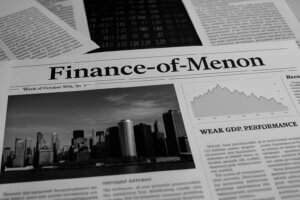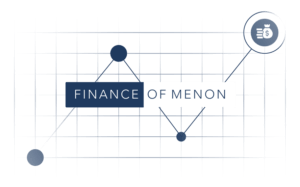Over the last few weeks, market chatter around the US dollar has escalated. Headlines warn of its decline. Analysts debate the risks to US Treasuries. And some investors are wondering: Is this the beginning of the end for the dollar’s dominance?
Let’s be clear — the dollar can weaken and still remain the world’s reserve currency. The two aren’t the same.
In fact, this distinction may be one of the most misunderstood dynamics in global capital markets today.
What’s Really Driving the Dollar Down?
The weakness in US Treasuries isn’t just about inflation or rate expectations. It’s more structural.
- Fiscal Position: The US government is running large deficits, and markets are starting to price in fiscal risk more than ever before.
- Main Street vs. Wall Street: For years, the strength of the dollar was tied to superior financial returns on Wall Street — think equity outperformance, tech dominance, and capital inflows. But Main Street — the real economy — is now showing cracks.
- Relative Growth & Rates: Other economies, particularly in Asia, are gaining momentum. The real (inflation-adjusted) interest rate differential is no longer as wide, reducing the dollar’s appeal.
America Can Still Lose the Currency Battle and Win the War
The dollar’s recent decline doesn’t mean the US is losing its global leadership. In fact, the very reason the dollar can decline is because the US remains strong enough to absorb it.
What we’re seeing is a shift in the basis of dollar demand:
- From Real Assets to Financial Flows: For decades, foreign demand for Treasuries and US financial assets propped up the dollar. That demand is now moderating.
- From US Hegemony to Multipolar Reality: China now accounts for over 30% of global manufacturing, more than double the US share. The world is no longer as dependent on the US for trade and production.
And yet, over 80% of global trade still references the dollar. In times of crisis, the dollar remains the first stop for liquidity. Reserve currency status isn’t about short-term strength. It’s about long-term trust.
Why This Matters for Investors
As capital allocators, the key takeaway isn’t to bet on a weaker dollar or rotate away from US assets. The takeaway is to separate sentiment from structure:
- Sentiment: Markets may continue to punish the dollar in the short term, especially as real interest rates compress and US deficits widen.
- Structure: But the USD remains embedded in the plumbing of the global financial system — trade, debt, central bank reserves, and settlement systems still run through it.
The Bigger Risk? Misreading the Signal
We’re entering a regime shift. Not one where the dollar disappears, but one where US dominance becomes less about pricing power and more about productivity.
If you’re a long-term investor, the playbook remains unchanged:
- Stay focused on fundamentals, not currency headlines.
- Build resilience through global and local diversification, not reactionary moves.
- Measure risks based on structural exposure of your family — not surface-level projections.
The dollar may weaken. America may reprice. But neither spells the end of US leadership.
Just don’t confuse the value of the dollar with the value of trust the world still places in its business and capitalist market.
Idea Credit: Ajay Mohanty
Disclaimer: Nothing here should be considered investment advice. All investments carry risks, including possible loss of principal and fluctuation in value. Finomenon Investments LLC cannot guarantee future financial results.






